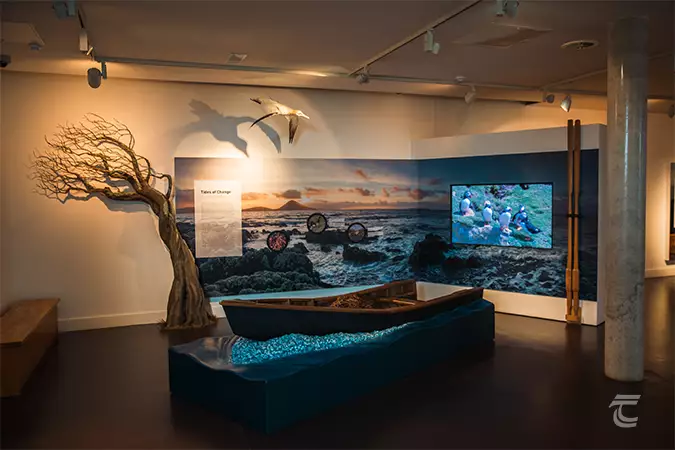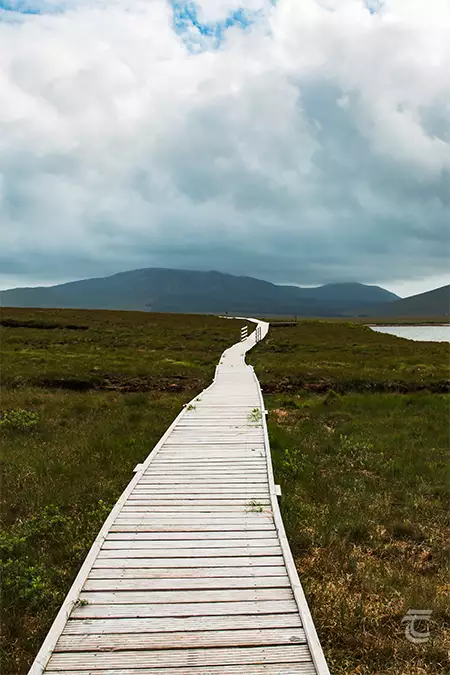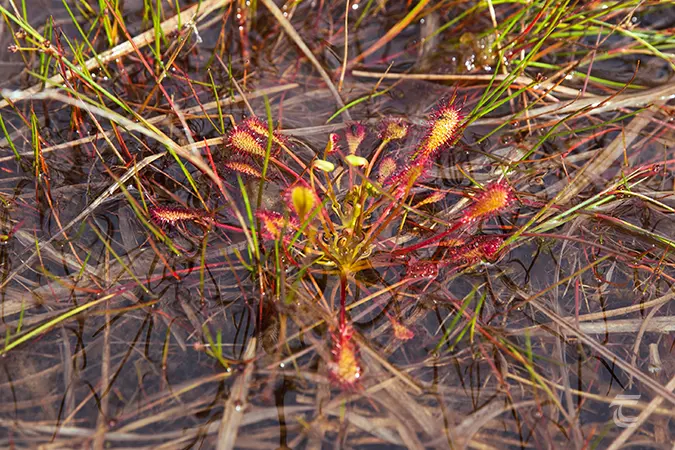Wild Nephin | Ballycroy National Park
Wild Nephin Ballycroy National Park is one of the last intact active blanket bog systems in Ireland and Western Europe, making it an important haven for wildlife and biodiversity. Though this landscape may seem desolate at first glance, it is certainly well worth taking the time to explore. The Ballycroy National Park Visitor Centre tells the story of blanket bogs, cliff and river habitats, all dominated by the Nephin Beg Mountains. Just south of the visitor centre is the Claggan Mountain Coastal Trail, with wooden boardwalks that allow you traverse over the deep sucking bog, covered in bog cotton in the summer with still pools, serenaded by the calls of wading birds. The bog is an ever-evolving fascinating landscape. It began to form around 5,000 years ago when the soils became much more waterlogged as the climate turned wetter and the first farmers in the Neolithic cleared much of the forests, allowing peat moss to develop. The stumps and gnarled roots of millennia old trees still fringe the shoreline, remnants of a once mighty Scots pine forest that thrived here thousands of years ago.
Though it has been present for millennia, Ireland’s bogs are under threat. Vast landscapes of the bog in the midlands has been overly-exploited for turf fuel and large swathes of blanket bog were planted with imported coniferous trees for lumber, causing the fragmentation and drainage of many of Ireland’s bogs. Areas like this at Ballycroy represent some of the best preserved bog landscapes, though intrusive species like rhododendron are beginning to challenge the native species. Along the Claggan Mountain Trail you can see the important environment created where blanket bog meets the shoreline, creating a habitat for otters, ringed plover, red-breasted merganser, heron, and the endangered curlew.
For practical information about visiting this site Click Here

The walkway through Ballycroy National Park • Mayo
Wild Nephin’s Carnivorous Plants
The mirror-like pools of water formed on the surface of the bog hide a thriving ecosystem, where insects are particularly abundant; from the dreaded ubiquitous midges, and whirligig beetles to beautiful dragonfly that darts around with incredible speed and agility. Due to the low nutrient value of the peat, some species of plant-like bladderwort or sundew have evolved to eat insects. The spoon-shaped leaves of the sundew are covered with tiny red tentacle-like protrusions that emit a clear secretion that insects mistake for nectar. When the insect lands, it becomes ‘glued’ by the sticky substance. Its struggles cause the other tentacles and leaves to close up over the top of the insect, trapping it while it is slowly digested, providing nutrients to the sundew.
Upper left: an exhibit in the Wild Nephin visitor centre • Lower left: the insectivorous sundew • Right: walking through Wild Nephin
Top: an exhibit in the Wild Nephin visitor centre • Middle: walking through Wild Nephin • Bottom: the insectivorous sundew.
Ballycroy National Park Visitor Information
Brimming with natural heritage and one of the last remaining active blanket bog systems in Western Europe, Wild Nephin offers an incredible and unique landscape to explore.




